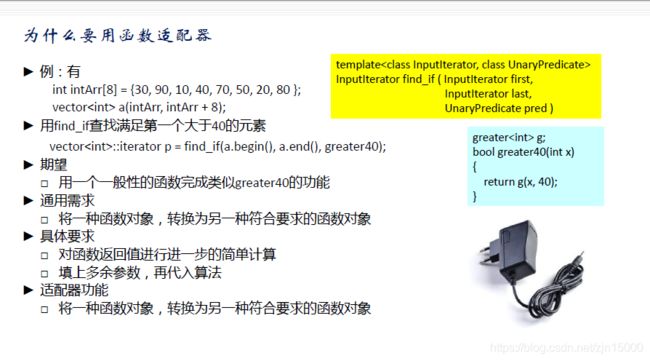STL中函数适配器
首先为什么要用函数适配器?

STL中的函数适配器分类:

(1)绑定适配器用法
将一个操作数绑定到给定值而将二元函数对象转换为一元函数对象。
bind2nd:将给定值绑定到二元函数对象的第二个实参;
bind1st:将给定值绑定到二元函数对象的第一个参数;
示例程序如下:
#include
#include
#include
#include
using namespace std;
int main()
{
int intArr[] = { 30,90,10,40,70,50,20,80 };
const int N = sizeof(intArr) / sizeof(int);
vectora(intArr, intArr + N);
vector::iterator p = find_if(a.begin(), a.end(), bind2nd(greater(), 40));
if (p == a.end())
cout << "no element greater than 40" << endl;
else
cout << "first element greater than 40 is:" << *p << endl;
system("pause");
return 0;
}
(2)指针函数适配器用法
对一般自定义的函数使用
#include(3)组合适配器
not1(…):生成一元函数的逻辑反
not2(…):生成二元函数的逻辑反
#include#include(4)成员函数适配器用法
mem_fun(…):使成员函数作为函数对象,传入对象指针;
mem_fun_ref(…):使成员函数作为函数对象,传入对象引用;
#include本文是在贺利坚老师的视频课的内容的基础上做的总结,仅作为后续自我复习使用。